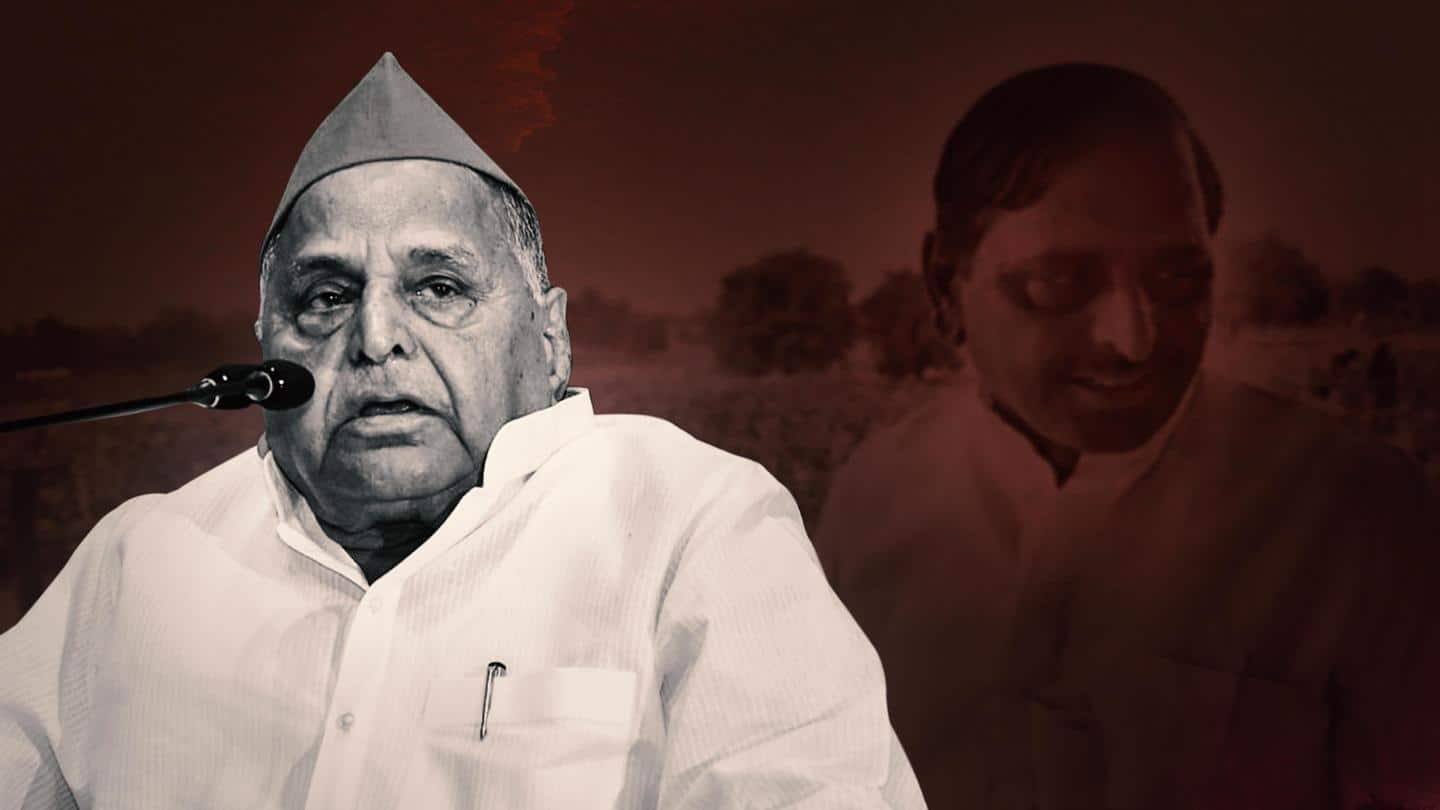
Mulayam Singh Yadav: From wrestler to political fighter
What's the story
Former Uttar Pradesh Chief Minister and Samajwadi Party patriarch Mulayam Singh Yadav died aged 82 on Monday.
His death has left a huge void in India's political landscape, particularly in his home state.
Through his vibrant socialist political career, Yadav transcended his "regional" identity and emerged as a significant icon of Indian politics.
Here, we highlight some important phases of his political life.
Early life
From wrestling akhara to political battlefield
Yadav was reportedly born into a poor family in the Saifai village of Uttar Pradesh's Etawa district on November 22, 1939.
His parents, Murti Devi and Sughar Singh Yadav, were poor peasants, and Yadav was one of their six children.
Initially, he had ambitions to become a wrestler and participated in a few competitions, too, before foraying into politics.
Details
Yadav's tryst with politics
Yadav entered politics at the age of 15 after being impressed by the writings of Indian socialist leader Ram Manohar Lohia, according to Britannica.
However, he was recruited into active politics by the then-MLA of Jaswantnagar, Nathu Singh, because of his impressive skills only in the early 1960s.
In 1967, he was elected as Jaswantnagar's MLA as a member of the Sanyukta Socialist Party.
Education
About his educational background
Yadav pursued his Bachelor of Arts (BA) and Bachelor of Teaching (BT) degrees from KK College, Etawah, and AK College, Shikohabad, respectively.
Later, he went on to pursue a Master of Arts (MA) in political sciences from BR College, Agra University, which probably even helped him sail through a tough political journey.
National limelight
Rose to national prominence after national emergency
Yadav was re-elected as Jaswantnagar's MLA in 1974. However, his term was interrupted owing to his detention during the national emergency imposed by former PM Indira Gandhi in 1975.
After his release in 1977, he was appointed as a Minister of State when the Janata Dal formed the first non-Congress Union government.
This transformed Yadav's political career as he rose to national prominence.
Opponents
Faced regional political challenges
In 1989, Yadav became the chief minister of Uttar Pradesh when the Janata Dal came to power with the help of the Congress.
However, with the rise of the saffron wave across North India, Yadav could not hold his chief ministerial position.
He eventually lost his CM seat to the Bharatiya Janata Party (BJP) after the Congress party withdrew its support in 1991.
Political leap
Rise of Samajwadi Party
Yadav launched the Samajwadi Party in 1992 and formed UP's government again within a year, thanks to his popularity among poor and underprivileged communities.
In 1996—when he won a Lok Sabha seat—he came close to becoming the prime minister as the Union Front was about to form the government.
However, Rashtriya Janata Dal supremo Lalu Prasad Yadav's opposition ended his chances of becoming PM.
Controversy
Rubbing shoulders with RSS
Yadav has kept a safe distance from far-right organizations due to his staunch opposition to the Rashtriya Swayamsevak Sangh (RSS) since the 1990s when he, as the UP CM, ordered the firing on Kar Sevaks years before the Babri Masjid demolition, probably to save his secular credentials.
However, in 2021, a photo of him with RSS chief Mohan Bhagwat at an event triggered controversy.
Details
Praises for PM Modi
Interestingly, during the final session of the Parliament before the 2019 Lok Sabha elections, Yadav raised eyebrows by expressing his desire for Narendra Modi to return as prime minister.
The move—in contrast with Yadav's image as a secular figure among Muslims—drew harsh criticism.
Moreover, his support for the BJP, which once termed him Mullah Mulayam—because of his close relationship with Muslims—had also surprised many.
Information
Yadav breathed his last in Gurugram hospital
The Samajwadi Party patriarch passed away shortly after 8:15 am on Monday after a prolonged illness. Yadav had been undergoing treatment at Medanta Hospital in Gurugram since August 22 where he breathed his last.